There are two options for connecting multiple solar panels in a system: series and parallel. Solar panels wired in series increase the volts of the solar array, but the amps remain the same. On the other hand, solar panels wired in parallel increase the amps while the volts remain the same. Connecting solar panels in parallel allows the system to generate more electricity without exceeding the voltage limits of the inverter.
Read the guide to learn about solar panel series vs. parallel connections. This page also aims to explain why wire solar panels are in series or parallel, compare their differences, pros, and cons, and discuss which connection is most beneficial based on your circumstances. Also, you will learn how Jackery solar panels are connected to power stations.
Solar Panels in Series VS. Parallel
There may be a wide range of choices for wiring your solar panels, including in series, in parallel, or in a combination, which depends on the number of panels and their sizes. Aim to select a configuration that strikes a compromise between a high enough voltage to charge the batteries continuously and the least amount of overall power output loss. The output voltage and output current are the primary differences between wiring your solar panels in series vs. parallel.
Solar Panels in Series
Many people consider connecting solar panels in series as they become more affordable and effective. Solar panels are linked in series and collectively produce energy. Because it enables the most sunlight to reach the panel and make the most power, this solar panel installation method is typically the most effective.
Solar panel series use does have some drawbacks, though. One drawback is that all the electricity one of the panels produces will be lost if it fails. All of your solar panels will be inactive until power is restored if there is a blackout or a storm that knocks out electricity to your house.

4 Solar Panels in Series
When connecting 4 solar panels in series, connect the positive terminal of the first solar panel directly to the negative terminal of the next one. Let's say you are connecting solar panels in series rated at 12V and 5A, the entire solar system would be 48V and 5A.

Solar Panels in Parallel
Parallel solar panels can produce more energy than those in sequence. They are also more effective because they can generate more power from sunlight. Putting your system together in parallel entails joining both the positive terminals of two panels and the negatives of each panel.
In contrast, wiring in series entails connecting a positive terminal of one panel to the negative of another. A positive connection connects the positive wires within a combiner box, and a negative connector connects the negative cables. PV output circuits are used to connect numerous solar panels in parallel.

4 Solar Panels in Parallel
In a parallel connection, you need to connect the positive terminals of all four solar panels together and all negative terminals together. Let's say you are connecting four solar panels in parallel rated at 12V and 5A. In this case, the solar panel array would be 12 volts and 20 amps.

Solar Panels in Series-Parallel
The charge controller is typically the only element that limits solar panel arrays. Charge regulators support only a specific range of amperage and voltage. In order to maintain those amperage and voltage limits for more extensive systems, we frequently need to get creative and use a series-parallel connection. A string is produced for this link by connecting two or more panels. The next step is to build and parallelize a similar line. There will be a significant power loss if four panels in a series are not paralleled with another 4.
Solar Panels in Series VS. Parallel
Solar panels can be wired to build an electrical circuit in two different ways: in series and in parallel. The quantity of solar energy that can be significantly captured depends on whether solar panels are used in series or parallel. The following compares solar panels in series vs. parallel in several aspects.
Series VS. Parallel: Volt & Amps
Volts, amps, ohms, and watts are the words used to describe electricity. Here is a brief explanation of each of these words. Electrical potential energy is quantified by voltage. On the other hand, Amps quantify electrical current and indicate the flow rate. The critical point to remember is that while wiring solar panels in tandem adds the amperage, wiring solar panels in series adds the voltages.
Connect the positive terminal on the first solar panel to the negative terminal on the second, and so forth, to wire solar panels in sequence. All of the panel voltages in the series will be added to produce the final voltage. However, the overall current will be the same as one panel's outgoing current.
Connect all positive terminals on each solar panel together before doing the same with the negative terminals to interconnect solar panels in parallel. The total amperages of the panels in the parallel arrangement make up the final current. The overall voltage will, however, be the same as the output voltage of a single screen.

Series VS. Parallel: Watts
What exactly are Watts? The unit we use to gauge an electrical system's strength is the Watt. Watts Equals Volts x Amps is the equation connecting watts, volts, and amps. The solar array's wattage is raised by connecting solar panels in series. It is because a greater total voltage is produced by combining the voltage of each panel. The power and current are increased. For this reason, it's crucial to ensure the panels work well together and can withstand higher power.
Essentially, you are joining all of the solar panels' positive and negative terminals when you wire them in parallel. With the total wattage of every solar panel in the string, a single long "string" of solar panels is created. Using a combiner box to connect the entire line of solar panels into a single larger circuit is crucial when wiring solar panels in parallel.

Series VS. Parallel: MC4 Connectors
The use of MC4 connectors is crucial when wiring solar panels in a series or parallel arrangement. The solar panels can easily be attached to these connectors' positive and negative terminals. Each solar panel's voltage is combined when wiring solar panels in series. The current of each solar panel is added together when wired in a parallel solar panel arrangement.

Series VS. Parallel: Parts List
There are a few factors to consider when deciding whether to wire solar panels in series vs. parallel. The first is choosing the suitable solar panel model. Monocrystalline and polycrystalline are the two varieties. Although more expensive, monocrystalline solar cells are more efficient. Although less efficient, polycrystalline solar cells are less expensive.
The magnitude of the solar panel array is the second factor. How many solar cells can be connected in series or parallel depends on their size. While combining solar cells in parallel increases current, joining them in series increases the voltage. Other factors to consider when wiring solar panels include the wire size and fuses, but these will differ based on the application.
Series VS. Parallel: Battery Charging
We must consider the other photovoltaic system elements, particularly the batteries. The critical fact is that a 12-volt battery requires at least 12.6 volts to charge. Solar panels in a parallel configuration generate a low voltage of 17 to 22 volts depending on the panels. And at this point, the environment and the panels' ideal operating circumstances are met. When connected in parallel, four 100-watt panels with a combined maximum voltage of 17.9 volts could generate 17.9 volts. The same panels could generate 71.6 volts when connected in series.
How to Wire Solar Panels in Series VS. Parallel
How are solar cells connected in series? The positive and negative wires on the solar panels should first be identified. The simplest method is to check the cables to see if they have been marked. For instance, solar panels' positive and negative wires were marked with plus and minus signs.
- On solar panels, distinguish between the positive and negative wires.
- Lay the solar panels horizontally.
- Join the negative cable from the second solar panel to the positive wire from the first solar panel.
- Connect the solar panels to the solar charge controller.
How are solar cells parallel wired? Two identical solar panels, two Y branch connections, MC4 inline fuses, and a multimeter should all be present at the outset. Between the positive solar panel cables and the branch connection, MC4 inline fuses may need to be connected.
- Note the positive and negative wires as well.
- Lay the solar panels horizontally.
- Connect the cables to the Y branch connectors.
- Join the solar charge controller to the solar arrays.
Which One is Better: Series VS. Parallel
Now that we know the differences between wiring solar panels in series vs. parallel, we can discuss the preferable choice. If you can spend most of your time in areas that are not shaded, connecting your solar panels in series is frequently favored. Your solar panel system will function more effectively and efficiently at the start and end of the day and when it's cloudy, which is the primary justification for this.
The parallel wiring of your solar cells is another excellent choice. MPPT charge controllers may need to be more skilled for minor portable uses because of their high cost. A parallel system might be a fantastic choice if you have a small low-voltage system for an RV or boat in variable lighting circumstances.
Solar Panels Series VS. Parallel Pros and Cons
People typically opt to connect solar panels in series. You'll spend less on cabling because it's simple and doesn't call for any special tools. The maximum Solar voltage of your charge controller is the most crucial factor to consider. Verify that the series string's maximum anticipated voltage does not go over this limit.
A little more caution is needed when wiring solar panels in parallel. To begin with, you should determine the maximum charging current that the charge controller is anticipated to output and confirm that all of your wiring and equipment is rated for that amount of current. Additionally, charge my battery's cell only as much as is advised, which could shorten its lifetime.
|
Wiring Solar Panels |
Pros |
Cons |
When to Use |
|
Series |
- No extra parts are required - Keep current low - Save money - Series strings work better at the start and end of the day |
- Not work well in shade - The entire array output drops together |
- Unshaded - Using an MPPT charge controller - Lower current ratings |
|
Parallel |
- Separate panels for power output - Charge faster |
- Requires branch connectors - Need to fuss the solar panels - Pricey |
- Mix-light condition - Using a cheaper PWM charge controller |
Jackery SolarSaga Solar Panels in Series VS. Parallel
Jackery empowers outdoor adventure by enabling clean charging efficiency and accessibility on or off the grid. Jackery portable solar panels can be folded and strapped for carrying and use. It is possible to make the most of the Sun and convert it into clean energy. Use solar panels combined with the Jackery power stations to charge your equipment. Jackery solar generators are the advanced off-grid solar-producing technology for improved backup management.
Jackery portable solar panels’ charging efficiency is up to 25%, which uses solar energy to its fullest potential. It is simple to connect your power station and solar panel. Connect your portable power station's DC input to the DC interface. A portable power station and solar panels are combined in the solar solution.

Jackery SolarSaga 500 X Solar Panel
The Jackery SolarSaga 500 X Solar Panel is suitable for recharging the power station during emergencies and essential home backup scenarios. It has a high efficiency of 25% using TOPCON cells and is IP68-rated for outdoor durability. You can connect the six portable Jackery SolarSaga 85 Solar Panels to build the Jackery SolarSaga 500 X Solar Panel, providing on-the-go convenience wherever you need power.
How to wire:
You can connect up to two Jackery SolarSaga 500X Solar Panels with compatible Jackery Portable Power Stations, such as Explorer 5000 Plus, Explorer 3000 Pro, Explorer 2000 Plus, Explorer 1000 Plus, and Explorer 1000 v2. You need a 5-meter solar charging cable to connect the Jackery SolarSaga 500 X Solar Panels with the Jackery Portable Power Stations.
Compatible With: Explorer 5000 Plus + 1*SolarSaga 500 X

Jackery SolarSaga 200W Solar Panels
The Jackery SolarSaga 200W solar panels are your best option if you want a solution that can power your entire home. Solar panels can generate more power under similar circumstances with a higher conversion rate of 24.3%. A Jackery Portable Power Station Explorer 2000 Plus can be fully charged in 2 hours using 6*SolarSaga 200W Solar Panels.
How to wire:
Before connecting the solar panel for charging, you should link the connector to the power station's DC input port. Once the power station has been fully charged, be careful to unplug the connector from the power station after removing the solar panel.
Jackery SolarSaga 200W
Compatible With:Explorer 2000 Pro + 1*SolarSaga 200W
How to Wire:

Compatible With:Explorer 2000 Pro + 2*SolarSaga 200W
How to Wire:

Compatible With:Explorer 2000 Pro + 2*SolarSaga 200W
How to Wire:

Compatible With:Explorer 2000 Pro + 3*SolarSaga 200W
How to Wire:

Compatible With:Explorer 2000 Pro + 4*SolarSaga 200W
How to Wire:

Compatible With:Explorer 2000 Pro + 6*SolarSaga 200W
How to Wire:

To connect one or two solar panels, you can directly connect the DC8020 port of the solar panels to the DC8020 port of the Jackery Explorer 2000 Plus Portable Power Station. If you want to connect three, four, or six solar panels, you will need to follow the following connection methods:
Compatible With:Explorer 2000 Plus + 3*SolarSaga 200W
How to Wire:

Compatible With:Explorer 2000 Plus + 4*SolarSaga 200W
How to Wire:

Compatible With:Explorer 2000 Plus + 6*SolarSaga 200W
How to Wire:

Jackery SolarSaga 100W Solar Panels
The Jackery SolarSaga 100W solar panel is ideal for outdoor enthusiasts due to its collapsible, lightweight, and easy-carry handle. The multi-layered cell technology enables the solar panels' higher conversion efficiency of 23.7%. Solar Saga 100 features 1* USB-C output port and 1* USB-A output port to charge two small devices directly.
How to wire:
This solar panel is compatible with the Jackery Explorer power stations, making it the ideal option for camping and power outages. You only should find the DC interface on the back of SolarSaga 100W. Connect DC interfaces with solar charge adapter, and connect the adapter with power stations.
Jackery SolarSaga 100W
Compatible With:Explorer 1500 + 1*SolarSaga 100W
How to Wire:

Compatible With:Explorer 1500 + 2*SolarSaga 100W
How to Wire:

Compatible With:Explorer 1000 + 1*SolarSaga 100W
How to Wire:

Compatible With:Explorer 1000 + 2*SolarSaga 100W
How to Wire:

Compatible With:Explorer 500 + 1*SolarSaga 100W
How to Wire:

Compatible With:Explorer 300 + 1*SolarSaga 100W
How to Wire:

If you want to connect one or two solar panels, you can do so by directly connecting the DC8020 port of the Jackery SolarSaga 100W Solar Panels to the DC8020 port of the Jackery Explorer 1000 Plus Portable Power Station. If you are connecting three to four solar panels, you can refer to the following images.
Compatible With:Explorer 1000 Plus + 3*SolarSaga 100W
How to Wire:

Compatible With:Explorer 1000 Plus + 4*SolarSaga 100W
How to Wire:

Jackery SolarSaga 100 Prime Solar Panels
The Jackery SolarSaga 100 Prime Solar Panels have a flexible design that allows easy setup in different environments, making them ideal for camping, RV, or emergency power needs. They utilize bifacial energy generation to increase the power output by 20%.
How to wire:
You can connect Jackery SolarSaga 100 Prime Solar Panels to the DC input port of the Jackery Explorer 1000 Plus Portable Power Station using the Anderson to DC8020 adapter.

Compatible With:Explorer 1000 Plus + 1*SolarSaga 100 Prime
If two solar panels are connected, you can directly connect the DC8020 port of the Jackery SolarSaga 100 Prime Solar Panels to the DC8020 port of the Jackery Explorer 1000 Plus Portable Power Station for charging.
Jackery SolarSaga 40W Solar Panels
The Jackery SolarSaga 40W Solar Panels weighs only 2.6 lbs and features a 23% solar conversion rate. The four-fold and compact design ensures you can pack the solar panels and carry them anywhere you go. It features dual USB-A/C ports to charge small appliances during various outdoor activities such as fishing, hiking, and camping.
How to wire:
The Jackery SolarSaga 40W Solar Panels are compatible with Jackery Explorer 300 Plus Portable Power Station. The DC8020 to USB-C adapter should be used to connect the Jackery SolarSaga 40W Solar Panels with the Jackery Explorer 300 Plus Portable Power Station and you should not use the adapter to charge other devices.

Compatible With: Explorer 300 Plus + 1*SolarSaga 40W
Solar Panels in Series VS. Parallel FAQs
The following shows the frequently asked questions about solar panels in series vs. parallel:
1. Can I mix series and parallel solar panels?
To increase the wattage, you can pass through the solar controller. You can combine solar cells in series and parallel. The MPPT controller, which allows a certain number of amps to pass through, is currently one of the best solar controllers.
2. Do I wire 12V solar panels in series or parallel?
As required, 12-volt panels can be wired in either of these arrangements. Although each connection type has benefits and drawbacks, everything will be fine with how the panel is used. The two are different based on the voltage and amps entered into the processor. You determine whether installing solar panels in series or parallel is better.
3. Can I mix solar panels from different manufacturers with different electrical ratings?
You can combine solar panels from various manufacturers with different electrical ratings, but you must adhere to some essential rules. All solar cells in a series-wired solar array must have the same current (amperage) rating. Although the voltages of the panels will add up, the current output will be equivalent to that of the panel with the lowest rating in the series.
All solar cells in a parallel solar array should have the same voltage rating. The system output voltage, in this case, will be identical to the panel with the lowest voltage rating, but the current output will add together.
4. Is it better to wire solar panels in series or parallel?
Connecting solar panels in series produce energy faster compared to solar panels in parallel. However, when there is something that blocks the sunlight striking the panels, the parallel wiring will have an advantage. This is because individual panels will continue generating energy irrespective of their counterparts.
Final Thoughts
This page describes the differences between wiring solar panels in series vs. parallel. Due to the lower amperage required in the wiring in series, you'll benefit from being able to use smaller gauge wiring. Smaller gauge wire is less expensive and simpler to work with. Since each panel operates separately, wiring in parallel removes the shading problem. Jackery solar panels combine with power stations so you can store the electricity in the power station for later use.

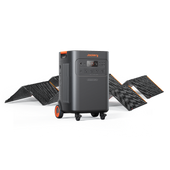










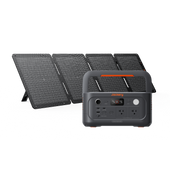





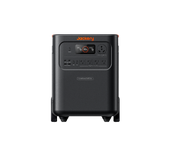
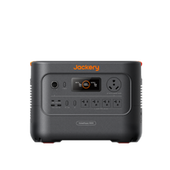




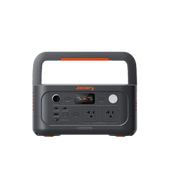





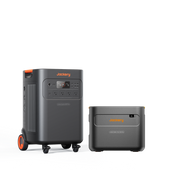
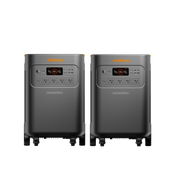
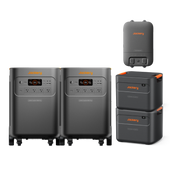





![[Add - on] Jackery Manual Transfer Switch for Explorer 5000 Plus - Jackery](http://www.jackery.com/cdn/shop/files/add-on-jackery-manual-transfer-switch-for-explorer-5000-plus-9017324.png?v=1754016782&width=170)
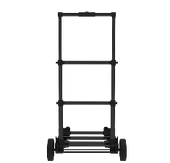
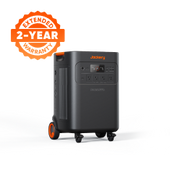
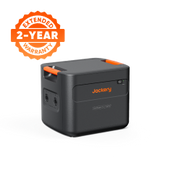
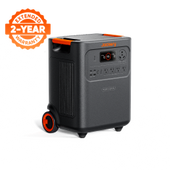
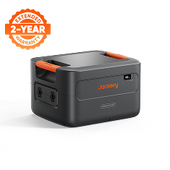
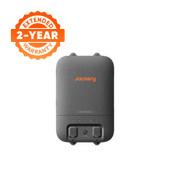



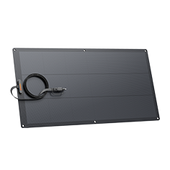
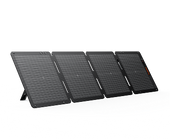



















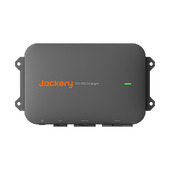




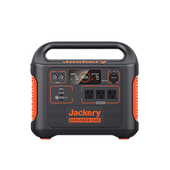







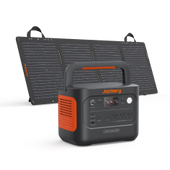
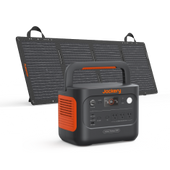





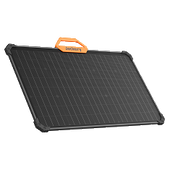


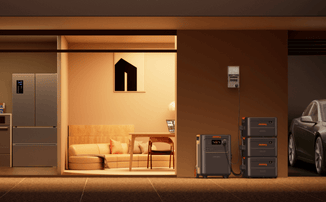













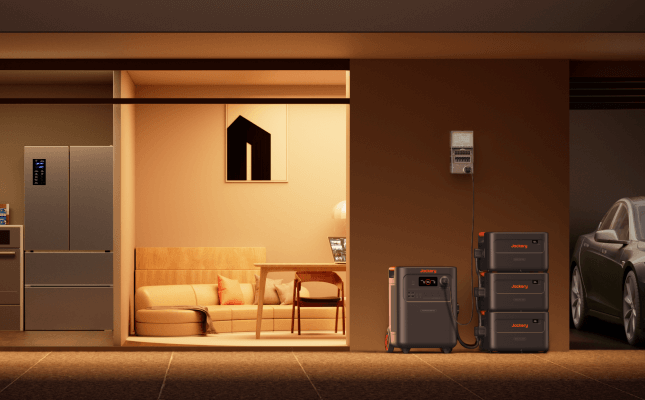


















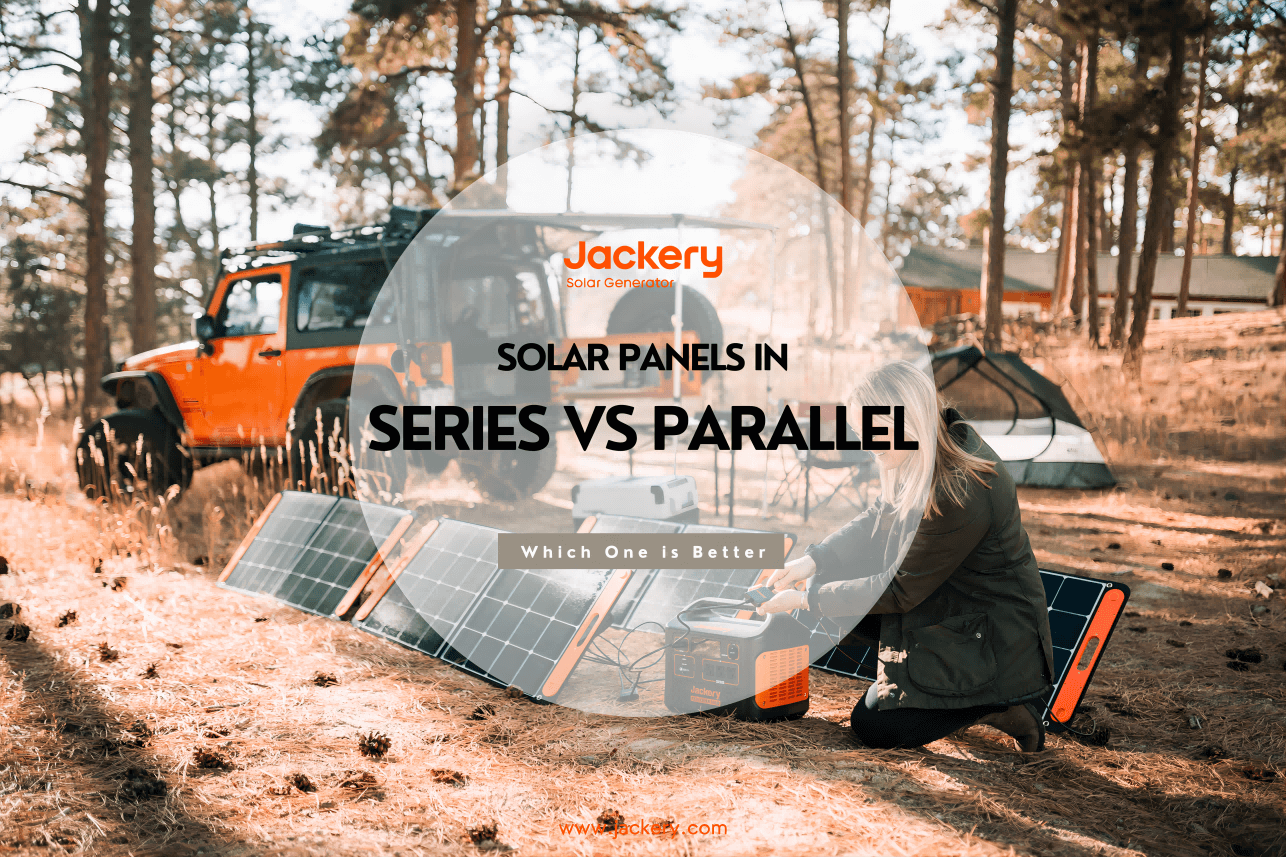







This article s/b updated to include the 500 panels
What is the highest DC input voltage for a Jackery 2000 Pro?
Do the Jackery Solar Generator Connectors connect the solar panels in series or parallel?
Leave a comment